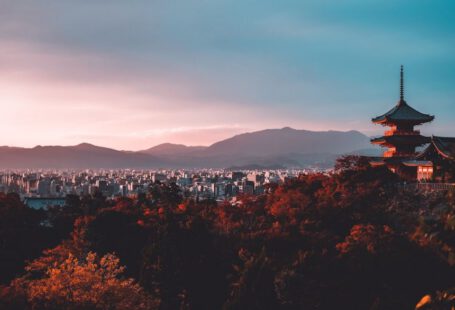Japan is a country with a rich cultural heritage and stunning natural landscapes. It is home to numerous UNESCO World Heritage Sites that attract tourists from around the world. From ancient temples to breathtaking mountains, Japan offers a diverse range of destinations for those seeking to explore its history and beauty. In this article, we will take a closer look at some of the UNESCO World Heritage Sites that you can visit in Japan.
One of the most famous UNESCO World Heritage Sites in Japan is the Historic Monuments of Ancient Kyoto. This collection includes 17 sites, including Kiyomizu-dera Temple, Kinkaku-ji (Golden Pavilion), and Nijo Castle. These sites showcase the architectural brilliance of ancient Japan and provide a glimpse into the country’s rich history.
Another must-visit UNESCO site is Hiroshima Peace Memorial (Genbaku Dome). This site serves as a stark reminder of the devastating impact of the atomic bomb that was dropped on Hiroshima during World War II. The Genbaku Dome, also known as the A-Bomb Dome, is the only structure that remained standing near the epicenter of the blast. It stands as a symbol of peace and a testament to the resilience of the people of Hiroshima.
If you are a nature lover, you should not miss out on visiting Shirakami-Sanchi. Located in the northern region of Honshu, this site is home to one of the largest remaining beech forests in the world. The lush greenery and pristine landscapes make it an ideal destination for hiking and exploring the beauty of nature.
For those interested in traditional Japanese architecture, Himeji Castle is a must-see. This magnificent castle is often referred to as the “White Heron Castle” due to its elegant white appearance. It is considered one of the finest surviving examples of medieval Japanese castle architecture and is a popular tourist attraction.
If you are fascinated by ancient rituals and traditions, you should visit the Sacred Sites and Pilgrimage Routes in the Kii Mountain Range. This site includes three sacred sites: Kumano Sanzan, Yoshino, and Omine. These sites have been an important spiritual destination for pilgrims for centuries and offer a unique insight into the religious practices of Japan.
Another UNESCO World Heritage Site worth visiting is the Historic Villages of Shirakawa-go and Gokayama. These villages are known for their traditional gassho-zukuri farmhouses, which have steep thatched roofs resembling hands in prayer. The villages provide a glimpse into traditional Japanese rural life and are especially picturesque during the winter season when they are covered in snow.
Last but not least is Mount Fuji, Japan’s most iconic natural landmark. This majestic mountain, with its perfectly symmetrical cone shape, is a symbol of Japan and a popular destination for climbers and hikers. Mount Fuji is also celebrated in traditional Japanese art, literature, and poetry, making it an important cultural and historical site.
In conclusion, Japan offers a wide range of UNESCO World Heritage Sites that showcase its rich history, culture, and natural beauty. Whether you are interested in ancient temples, historic monuments, or breathtaking landscapes, Japan has something to offer for every traveler. So, pack your bags and get ready to explore the wonders of Japan’s UNESCO World Heritage Sites.





